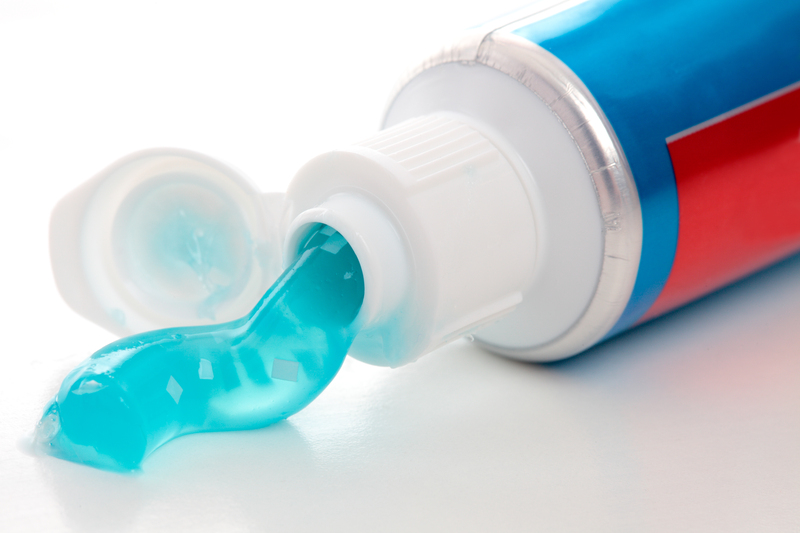Transform Your Space: Banish Pet Odors
Posted on 26/08/2025
Transform Your Space: Banish Pet Odors for Good
Pets bring warmth, joy, and unconditional love into our homes, but sometimes along with their playful pounces and wagging tails comes an unwanted guest--pesky pet odors. If you're a pet parent searching for solutions to eliminate pet smells and refresh your space, you're in the right place. This comprehensive guide dives deep into strategies for banishing pet odors and keeping your home fresh, clean, and inviting.

Why Do Homes with Pets Smell?
Before we tackle how to remove pet odors, let's understand why these smells persist. Pet odors usually originate from:
- Accidents: Occasional "oops" moments with urine or feces
- Dander: Flakes of skin and fur that collect on surfaces
- Saliva: Pets lick themselves and furniture, leaving invisible residues
- Oils: Natural oils secreted from your pet's skin and fur can get on fabrics
- Unwashed Bedding: Beds and blankets become reservoirs of smell, especially if not cleaned regularly
With this knowledge, you can now target pet odors at the source for more effective results.
A Room-by-Room Approach to Banish Pet Odors
Transforming your home and eliminating pet odors is much easier if you break it down by zone. Let's explore key strategies for different areas.
1. Living Room - The Heart of the Home
- Vacuum Frequently: Use a vacuum with a HEPA filter to trap dander and pet hair. Go over couches, carpets, under furniture, and curtains.
- Fabric Refresh: Wash throw blankets and pillow covers weekly. Use a fabric-safe enzyme spray for upholstery after pet accidents.
- Odor Neutralizers: Try baking soda as a carpet deodorizer. Sprinkle, wait 15 minutes, and vacuum up.
- Essential Oil Diffusers: Select pet-safe oils (like lavender) for a subtle scent boost.
2. Kitchen & Dining Areas
- Clean Pet Feeding Stations: Food and water bowls can become hotspots for bacteria. Wash them daily and disinfect floors underneath weekly.
- Control Allergens: Use a damp mop on hard floors to collect fine pet hairs and dander.
- Storage Solutions: Store pet food in airtight containers to reduce odors.
3. Bedrooms - Your Sanctuary
- Launder Pet & Human Bedding Regularly: Wash bedding at least once a week in hot water. This removes fur, dander, and any lingering smells.
- Limit Bedroom Access: Consider making at least one bedroom a pet-free zone to maintain a completely odor-neutral space.
- Use Mattress and Pillow Protectors: These waterproof barriers help trap dander and prevent urine from soaking in, should any accidents occur.
4. Pet Zones - Crates, Beds, and Litter Boxes
- Deep Clean Pet Beds: Choose washable beds and clean weekly. For non-washable beds, vacuum and use a pet-safe spray.
- Replace Litter Frequently: For cats, scoop waste daily and replace litter as recommended by the manufacturer.
- Litter Box Upgrades: Consider high-performance, odor-controlling litter, or add a deodorizer designed for pets.
Effective Cleaning Strategies to Remove Pet Odors
When it comes to effectively getting rid of pet smells, the secret is routine cleaning combined with targeted products. Here's a deep dive into tools and techniques that really work.
1. Enzyme Cleaners: Nature's Powerhouse
- How They Work: Enzyme cleaners break down organic pet messes (like urine or drool) on a molecular level, removing stains and odors at the source.
- Best Uses: Saddled with mystery stains or dog-urine odors? Soak the area liberally with enzyme solution and let it sit per product instructions.
2. Baking Soda: The Universal Deodorizer
- Why It Works: Baking soda is mildly alkaline and absorbs acidic pet odors, making it ideal for carpets and upholstery.
- How To Use: To eliminate dog smells in rugs or couches, sprinkle generously, wait, and vacuum. For a more potent clean, mix a paste with water and scrub into trouble spots (spot test first).
3. White Vinegar: An All-Natural Solution
- Deodorize: Dilute white vinegar 50/50 with water and spritz onto smelly surfaces after spot-testing. The vinegar smell fades, taking pet odors along with it.
- Neutralize Accidents: A vinegar solution is particularly good on recent urine stains. Always blot fresh messes first, then apply vinegar.
4. Air Purifiers: The High-Tech Approach
- HEPA and Carbon Filters: Air purifiers with HEPA filters catch dander, while activated carbon traps odors. Run them continuously in rooms where pets spend the most time.
- Bonus Tip: Some purifiers feature UV-C sanitizing lights, further controlling bacteria and odor.
5. Professional Carpet & Upholstery Cleaning
- When To Call Pros: If you've tried everything and still battle lingering dog or cat smells, a professional hot-water extraction or steam clean may be necessary.
- Frequency: Schedule at least once or twice a year or more often for multiple pets or chronic accidents.
Preventing Pet Odors: Setting Up for Success
Prevention is crucial for maintaining a continuously fresh-smelling home. Here's how you can set yourself (and your pets!) up for odor-free success.
1. Practice Regular Grooming
- Bathe pets as appropriate for their breed (usually once a month for dogs, every few months for cats unless soiled).
- Brush regularly to reduce loose fur and dander, especially during shedding season.
- Wipe paws after walks to prevent tracking dirt and oils inside.
2. Use Air Circulation to Your Advantage
- Open windows daily: Fresh air flushes out stale odors and brings in oxygen-rich air.
- Use fans: Ceiling or portable fans help move air, making it harder for smells to settle in soft furnishings.
3. Pet Training & Management
- Consistent potty training: The fewer accidents, the fewer odors you'll need to tackle.
- Consider puppy pads: Especially for young dogs or older pets with incontinence issues.
- Reward outside elimination: Make outdoor pottying the most exciting option for your pet.
4. Choose Odor-Resistant Materials
- Hard flooring: Tile, laminate, or sealed wood are easier to clean and don't harbor smells like carpet.
- Washable slipcovers: Easily removed and laundered when refreshed is needed.
- Pet beds with removable covers: Opt for machine-washable varieties.
Natural Solutions vs. Chemical Deodorizers
There's a growing desire to keep homes toxin-free, especially around pets. Here's a look at natural vs. commercial odor-eliminating options:
- Natural: Vinegar, baking soda, and activated charcoal are safe and effective. Essential oils must be pet-safe (avoid tea tree, citrus, or ylang-ylang for cats).
- Chemical: Many commercial sprays mask odors with fragrances but may not neutralize smells. Look for enzyme-based pet deodorizers for true odor removal, and avoid products with phthalates, parabens, or formaldehyde.
When in doubt, read labels and consult your vet regarding pet-safe cleaning products.
Quick DIY Recipes for Pet Odor Control
Harness your inner chemist with these easy, effective home solutions:
-
Baking Soda Carpet Sprinkle:
- Mix 1 cup baking soda, 10 drops pet-safe essential oil.
- Sprinkle on carpets, wait 20 minutes, and vacuum.
-
Vinegar Air Freshener:
- Combine equal parts white vinegar and water in a spray bottle.
- Spritz into air or onto smelly surfaces--vinegar scent fades, taking odors with it.
-
Lemon Odor Absorber:
- Place sliced lemons in bowls around the home to neutralize odors.
-
DIY Pet Bedding Refresher:
- Mix 2 tablespoons baking soda with 1 cup warm water. Wipe down hard pet surfaces like crate bottoms or carriers.
Common Odor Hotspots: Don't Forget These!
It's easy to overlook hidden sources where pet odors might concentrate. Pay special attention to:
- Baseboards and walls: Dogs and cats often brush against these, leaving oils and smells.
- Under furniture: Hair and dander collect here--move and vacuum underneath regularly.
- Air vents: Change HVAC filters often and have ducts cleaned every couple of years if you notice persistent smells.
- Pet collars and harnesses: Wash these routinely--they absorb sweat and oils too.
- Window sills and drapes: Cats love to lounge here, so wipe down sills and wash drapes as needed.
The Link Between Pet Health and Odors
Sometimes, strong or persistent pet odors can signal health issues such as ear infections, dental disease, skin conditions, or urinary tract problems. If your usual cleaning measures aren't working and your pet's odor persists, consult your veterinarian. Regular grooming and check-ups not only keep your pet healthy but can help you keep your home odor-free as well.

Creating a Long-Term Freshness Plan
Combine daily tidying, weekly deep cleans, and strategic use of odor-absorbing products for a space that always feels fresh. Set reminders for:
- Weekly washes of pet beds and blankets
- Daily litter and potty checks
- Monthly deep cleans of carpets, upholstery, and air vents
The goal is simple: Transform your home into a haven for both humans and pets, free from embarrassing pet odors.
Conclusion: Enjoy the Best of Both Worlds
With the right information and a consistent cleaning routine, you can easily banish pet odors and transform your space into a welcoming, sweet-smelling sanctuary. Remember, it's not about hiding fragrances with sprays, but about tackling smells at the source. Love your pets without compromise--enjoy a fresh, clean home today!





